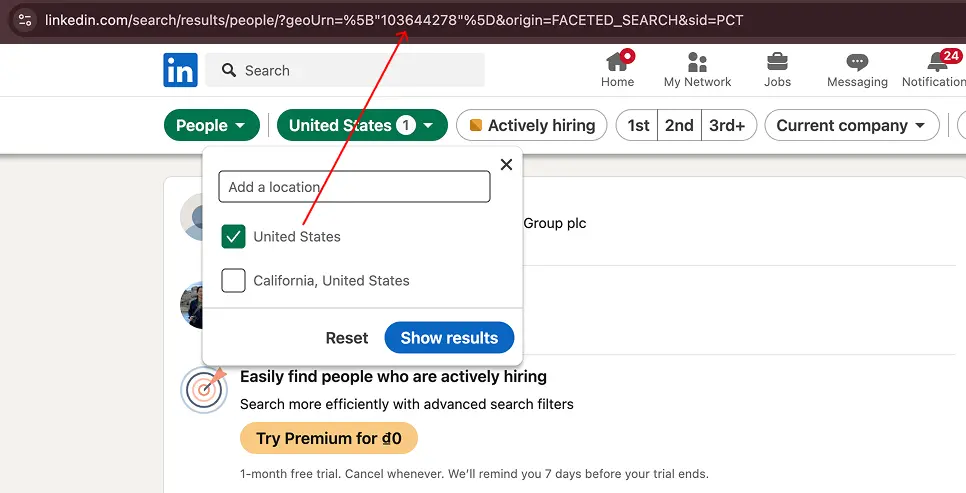How to Find a LinkedIn Geo Code: Complete Location ID Guide
Learn how to easily find LinkedIn geo_codes for locations, regions, and countries to enhance your LinkedIn API queries for job searches and people filters.

How to Find a LinkedIn Geo Code: Complete Location ID Guide
When working with LinkedIn's API ecosystem, location filtering is a powerful way to narrow your search results. Learning how to find location geo_codes is essential for precise targeting in recruitment, sales, and market research. This guide provides a straightforward approach to finding any LinkedIn geo_code.
Table of Contents
- What is a LinkedIn Geo Code?
- Why You Need a Geo Code
- How to Find a Geo Code
- Understanding Geo Codes in URLs
- Using Geo Codes with LinkedIn APIs
- Common Issues and Solutions
What is a LinkedIn Geo Code?
In LinkedIn's ecosystem, each location, region, or country is associated with a globally unique identifier known as a geo_code. This numeric ID serves as a permanent reference to a specific geographical area, regardless of language settings or regional naming differences.
For example, the United States has the geo_code 103644278. This identifier remains consistent across all LinkedIn's systems and APIs.
Why You Need a Geo Code
The geo_code is a crucial parameter when using various LinkedIn API endpoints, including:
- Employee Search: Find professionals working in specific locations
- Job Search: Filter job postings by geographical areas
- Company Search: Identify organizations based in particular regions
- Market Analysis: Research professional demographics by location
Without the correct geo_code, these API operations cannot accurately filter by location, making this identifier essential for any location-based LinkedIn data analysis.
How to Find a Geo Code
Finding a LinkedIn geo_code is remarkably simple. Just follow these steps:
- Visit LinkedIn's search page: https://www.linkedin.com/search/results/people/
- Click on the "Locations" filter option
- Enter your target location (e.g., "United States") in the search field
- Apply the location filter to narrow results to this area
- Look at your browser's address bar
The geo_code will appear in the URL as a parameter. For example, in a URL like:
https://www.linkedin.com/search/results/people/?geoUrn=%5B%22103644278%22%5D&origin=FACETED_SEARCH
The number 103644278 is the geo_code for the United States.
Understanding Geo Codes in URLs
Let's look at a real example of how geo codes appear in LinkedIn URLs:

In this screenshot, you can see the United States geo code (103644278) in the URL. The geo code appears after geoUrn=%5B in the URL and is highlighted with a red arrow.
When examining LinkedIn URLs, geo_codes appear after the geoUrn= parameter. The URL encoding follows the same pattern as other LinkedIn identifiers:
%5Brepresents[in URL encoding%22represents"in URL encoding%5Drepresents]in URL encoding%2Crepresents,in URL encoding
So a URL with multiple locations would look like:
https://www.linkedin.com/search/results/people/?geoUrn=%5B%22103644278%22%2C%22101174742%22%5D
Which represents the geo_codes for multiple locations (in this example, the United States and Canada).
If you're using a tool like the Fresh LinkedIn Scraper API, you can now use these codes to power various API calls.
Using Geo Codes with LinkedIn APIs
Once you have the geo_code, you can use it with various LinkedIn API endpoints:
Search People by Location
const axios = require("axios");
const options = {
method: "GET",
url: "https://fresh-linkedin-scraper-api.p.rapidapi.com/api/v1/search/people",
params: {
geo_code: "103644278", // United States geo_code
page: "1",
},
headers: {
"x-rapidapi-host": "fresh-linkedin-scraper-api.p.rapidapi.com",
"x-rapidapi-key": "YOUR_RAPID_API_KEY",
},
};
axios
.request(options)
.then(function (response) {
console.log(response.data);
})
.catch(function (error) {
console.error(error);
});
You can also use curl to make the same request:
curl --request GET \
--url 'https://fresh-linkedin-scraper-api.p.rapidapi.com/api/v1/search/people?name=john&page=1&geocode_location=103644278' \
--header 'x-rapidapi-host: fresh-linkedin-scraper-api.p.rapidapi.com' \
--header 'x-rapidapi-key: YOUR_RAPID_API_KEY'
Note that when using curl, the parameter name is geocode_location rather than geo_code as in the JavaScript example.
Search Jobs by Location
const axios = require("axios");
const options = {
method: "GET",
url: "https://fresh-linkedin-scraper-api.p.rapidapi.com/api/v1/search/job",
params: {
geo_code: "103644278", // United States geo_code
page: "1",
},
headers: {
"x-rapidapi-host": "fresh-linkedin-scraper-api.p.rapidapi.com",
"x-rapidapi-key": "YOUR_RAPID_API_KEY",
},
};
axios
.request(options)
.then(function (response) {
console.log(response.data);
})
.catch(function (error) {
console.error(error);
});
You can also use curl to make the same request:
curl --request GET \
--url 'https://fresh-linkedin-scraper-api.p.rapidapi.com/api/v1/job/search?keyword=backend&page=1&geocode=103644278' \
--header 'x-rapidapi-host: fresh-linkedin-scraper-api.p.rapidapi.com' \
--header 'x-rapidapi-key: YOUR_RAPID_API_KEY'
Note that when using curl for job searches, the parameter name is geocode rather than geo_code as in the JavaScript example. Additionally, the endpoint is job/search instead of search/job as shown in the JavaScript example above.
Common Issues and Solutions
Location Not Found
If you're having trouble finding the geo_code:
- Try alternative spellings or the full official name of the location
- Use broader regions if specific cities aren't available
- Check if LinkedIn supports the location in search filters
Multiple Similar Locations
For locations with similar names:
- Pay attention to state/province/country information in the filter
- Verify the surrounding area matches your target location
- Check population size or other distinguishing features
API Returns No Results
If your API call returns empty results:
- Confirm you're using the correct geo_code format (numbers only, no special characters)
- Verify your API key and authentication are valid
- Try using broader geo_codes (country instead of city) if data is sparse
Finding and using LinkedIn geo_codes correctly is a fundamental skill when working with location-based LinkedIn data. With this simple guide, you can quickly integrate location filtering into your applications, research, or recruitment workflows.
